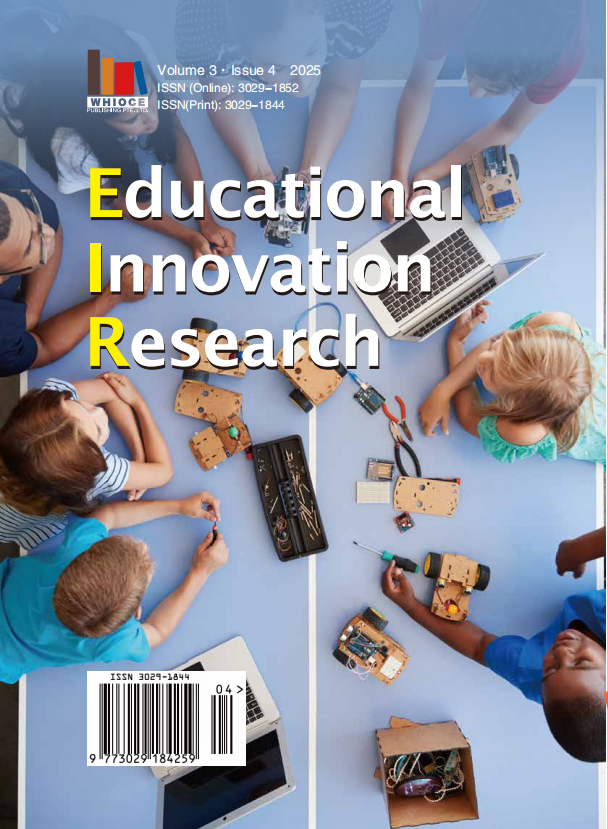Research on Digital Twin Wisdom Teaching Mode for Cultivation of Higher-Order Thinking Skills
DOI:
https://doi.org/10.18063/eir.v3i4.1007Keywords:
Digital twins, Higher order thinking, Smart teachingAbstract
As global digital transformation of education continues to gain momentum, higher-order thinking skills have become an important dimension of the core competitiveness of talents. The traditional teaching paradigm is limited to specific liabilities of physical time and space, identified as well as a scarcity of resources, thereby limiting the support to the systematic cultivation of learning on students' critical thinking as courses of study, innovative design, and complex problem-solving capabilities linked to their education and professional development. Digital twin technology, defined as possessing a characteristics of virtual-real mapping, dynamic simulation and real-time feedback, provides a new avenue for ushering in a reconstruction of the teaching paradigm. The focus of this study is on this smart teaching model empowered by digital twin technology. By establishing theoretical in-depth interaction between the three-dimensional virtual scenario and physical teaching space, it realizes the organic integration of the real situation knowledge application stage and the thinking training stage. Although the paradigm-related teaching reform, driven by technology, broadens the borders of cognition there are difficulties that involve the bottleneck of the real-time interaction of multi-source data as well as the limited technical adaptability of both teachers and students. In this regard, researching the cultivation mechanism of this teaching model for higher-order thinking is important, not only as a breakthrough in educational technology theories but also as a breakthrough to improving the quality of education for efficient learning.
References
Kinsner W. Digital twins for personalized education and lifelong learning[C]//2021 IEEE Canadian Conference on Electrical and Computer Engineering (CCECE). IEEE, 2021: 1-6.
Siyan C, Tinghuai W, **aomei L, et al. Research on the improvement of teachers’ teaching ability based on machine learning and digital twin technology[J]. Journal of Intelligent & Fuzzy Systems, 2021, 40(4): 7323-7334.
Song L, Lu Z, Petsangsri S. Reconstruction of Smart Learning Space Based on Digital Twin (DT) Technology[C]//2020 7th International Conference on Dependable Systems and Their Applications (DSA). IEEE, 2020: 398-406.
Zhang J, Zhu J, Tu W, et al. The effectiveness of a digital twin learning system in assisting engineering education courses: a case of landscape architecture[J]. Applied Sciences, 2024, 14(15): 6484.
Screpanti L, Scaradozzi D, Gulesin R N, et al. Control Engineering and Robotics since Primary School: an Infrastructure for creating the Digital Twin model of the Learning Class[J]. IFAC-PapersOnLine, 2022, 55(17): 267-272.

